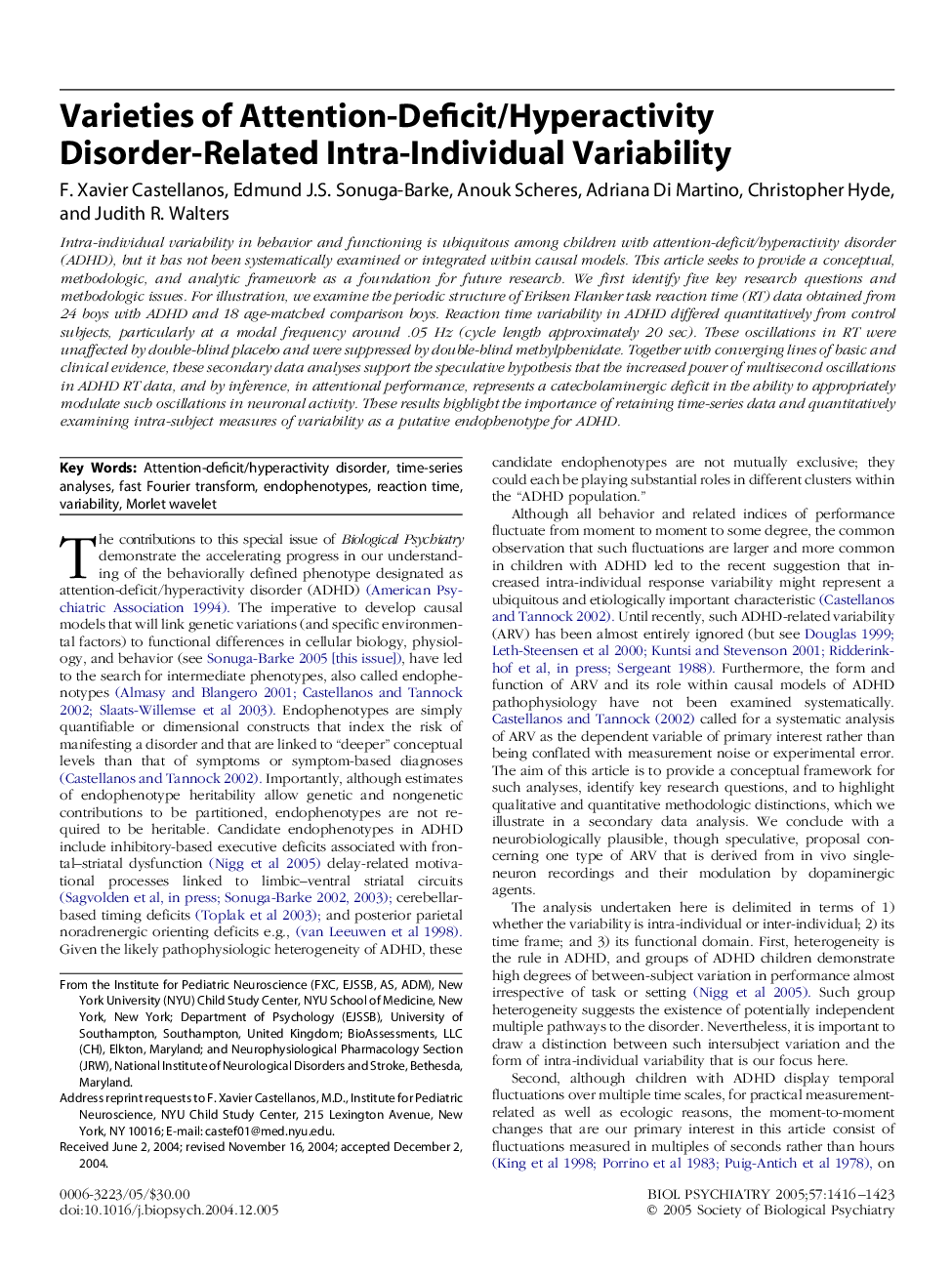| Article ID | Journal | Published Year | Pages | File Type |
|---|---|---|---|---|
| 9377571 | Biological Psychiatry | 2005 | 8 Pages |
Abstract
Intra-individual variability in behavior and functioning is ubiquitous among children with attention-deficit/hyperactivity disorder (ADHD), but it has not been systematically examined or integrated within causal models. This article seeks to provide a conceptual, methodologic, and analytic framework as a foundation for future research. We first identify five key research questions and methodologic issues. For illustration, we examine the periodic structure of Eriksen Flanker task reaction time (RT) data obtained from 24 boys with ADHD and 18 age-matched comparison boys. Reaction time variability in ADHD differed quantitatively from control subjects, particularly at a modal frequency around .05 Hz (cycle length approximately 20 sec). These oscillations in RT were unaffected by double-blind placebo and were suppressed by double-blind methylphenidate. Together with converging lines of basic and clinical evidence, these secondary data analyses support the speculative hypothesis that the increased power of multisecond oscillations in ADHD RT data, and by inference, in attentional performance, represents a catecholaminergic deficit in the ability to appropriately modulate such oscillations in neuronal activity. These results highlight the importance of retaining time-series data and quantitatively examining intra-subject measures of variability as a putative endophenotype for ADHD.
Keywords
Related Topics
Life Sciences
Neuroscience
Biological Psychiatry
Authors
F. Xavier Castellanos, Edmund J.S. Sonuga-Barke, Anouk Scheres, Adriana Di Martino, Christopher Hyde, Judith R. Walters,
